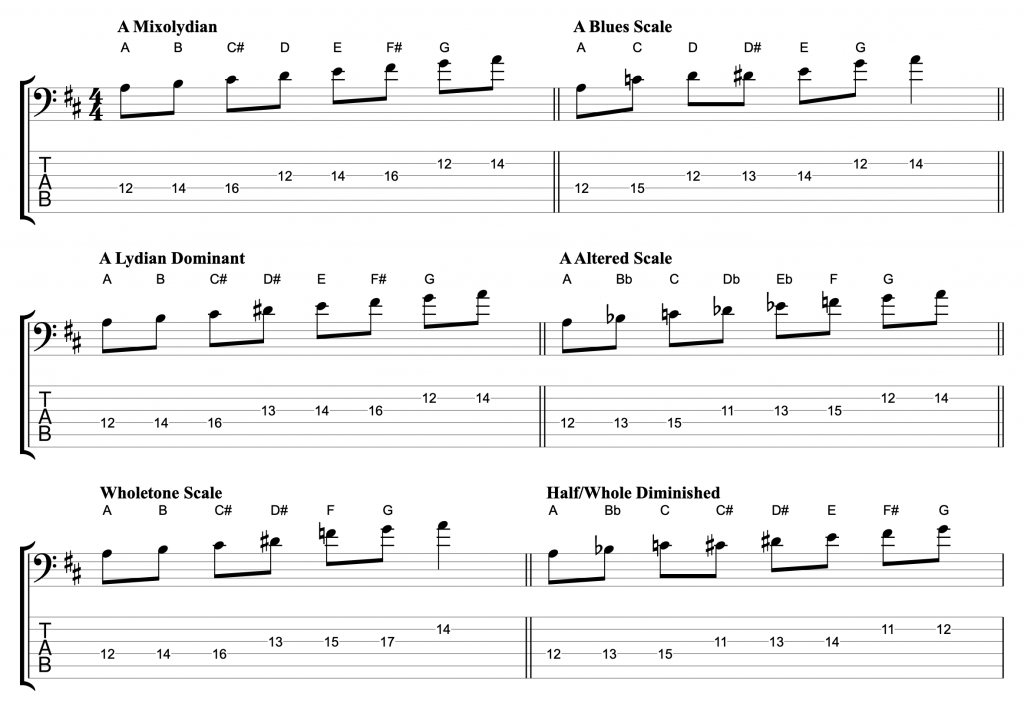How I Approach Improvising on Dominant 7th Chords – Bass Practice Diary – 22nd June 2021
I’ve mentioned many times in previous videos that jazz musicians love dominant chords. They love them because there’s so many different ways you can play on them. Depending on the context, you can get away with playing any note on a dominant chord. But it doesn’t help you learn how to improvise if you think “play anything”. It helps if you think about strategies for improvisation. I think everyone who improvises has at least some kind of strategy. And a more experienced improviser probably has many strategies to draw upon. So when you’re practicing improvisation, don’t just pick your favourite strategy. Practice as many strategies as you can think of. And then you never know what you might discover.
Strategies for Improvising on Dominant 7th Chords
In this video I’ve tried to include many of the common strategies for playing on dominant 7th chords. And this is by no means an exhaustive list. Some of these ideas I’ve featured in videos before. Click here to find my video about chromatic approach notes. This video is about the altered scale. And this one is about combining diminished and blues scale sounds.
To me, every scale is a sound. Or it creates a particular sound against a specific chord. So, when I’m improvising, I’m thinking about sounds, not scales. But, having said that, all of these scales form those sounds, so that’s why we think about scales when we study improvisation strategies. The important thing to remember, is that when you’re learning any of these scales. You are not just learning a fingering or a pattern on the fretboard. You are trying to learn the sound that it creates against a dominant chord. Here are the scales.





